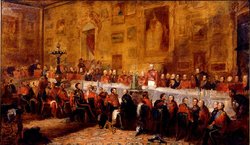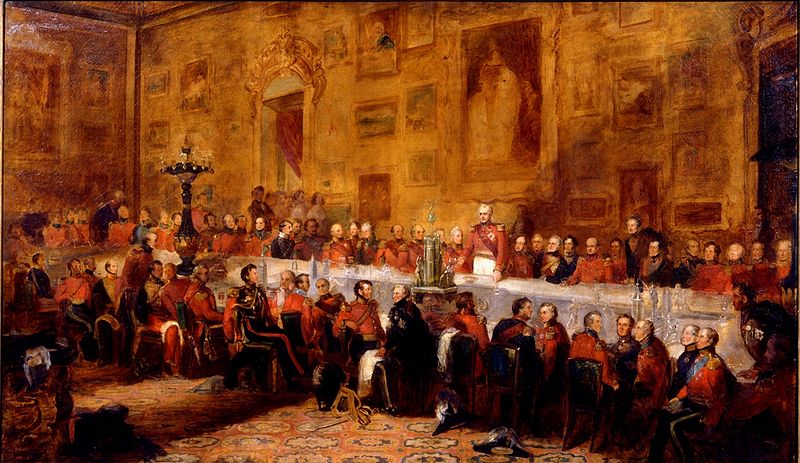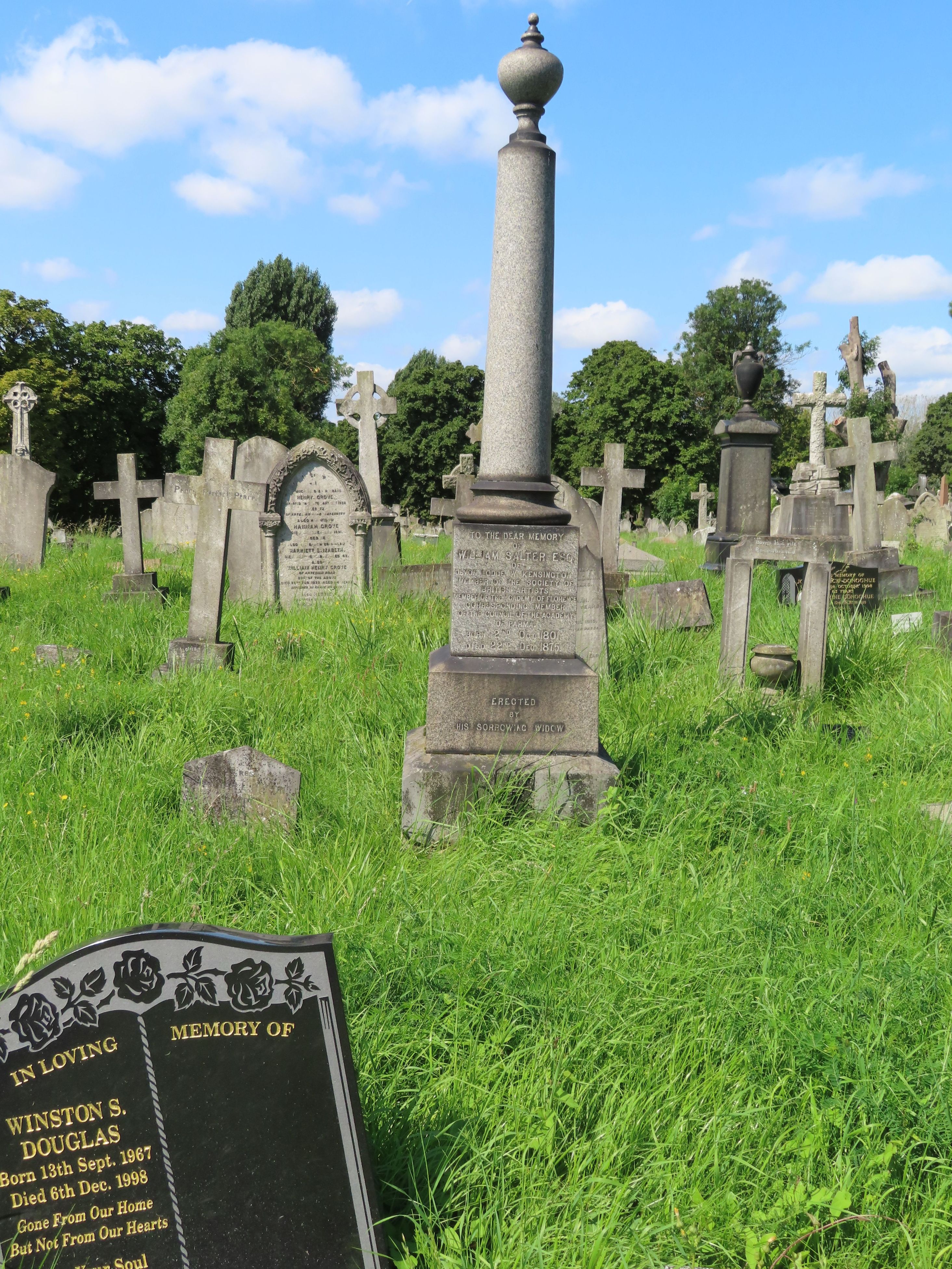Still at Apsley House, his most famous work depicts the Duke of Wellington's (Arthur Wellesley) annual commemorative celebration of the British victory over French Emperor Napoleon Bonaparte at the Battle of Waterloo in present-day Belgium on June 18, 1815. He observed the banquet in progress on 18 June 1836 whilst in Hyde Park and was so impressed by it that he sought permission to paint it via his patron Priscilla Wellesley-Pole, the Duke's niece. The Duke initially refused but was finally persuaded to accede to the request. To prepare for the work, Salter also painted studies and full portraits of several British generals and army officers of that time, including Charles Rowan, of which two variants survive in the collections of the Metropolitan Police Service (of which Rowan was later Commissioner) and the National Portrait Gallery.
The group portrait itself was later engraved and became very popular with the public after it was first exhibited in 1841. In 1846 he became a member of the Society of British Artists. He died at his home around the age of 71.
Still at Apsley House, his most famous work depicts the Duke of Wellington's (Arthur Wellesley) annual commemorative celebration of the British victory over French Emperor Napoleon Bonaparte at the Battle of Waterloo in present-day Belgium on June 18, 1815. He observed the banquet in progress on 18 June 1836 whilst in Hyde Park and was so impressed by it that he sought permission to paint it via his patron Priscilla Wellesley-Pole, the Duke's niece. The Duke initially refused but was finally persuaded to accede to the request. To prepare for the work, Salter also painted studies and full portraits of several British generals and army officers of that time, including Charles Rowan, of which two variants survive in the collections of the Metropolitan Police Service (of which Rowan was later Commissioner) and the National Portrait Gallery.
The group portrait itself was later engraved and became very popular with the public after it was first exhibited in 1841. In 1846 he became a member of the Society of British Artists. He died at his home around the age of 71.
Bio by: William Bjornstad
Advertisement




